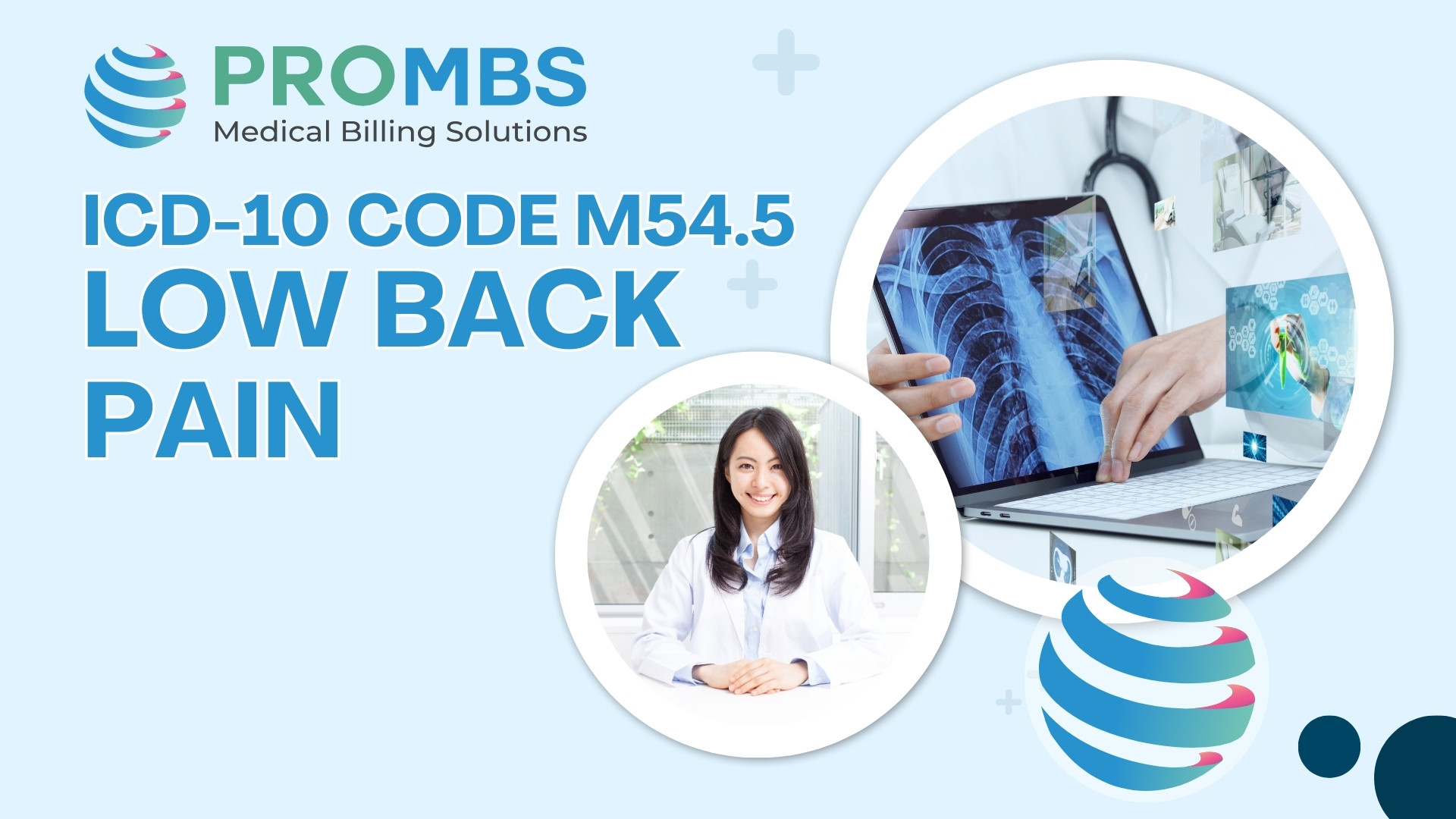Low back pain is among the most common complaints seen in outpatient settings, affecting millions of individuals each year. From a clinical and administrative standpoint, documenting and coding this condition correctly is essential for quality care, clean claims, and proper reimbursement. One of the most frequently used codes in this context is the ICD-10 code M54.50.
If you're unfamiliar with this code or unclear about when and how to use it, this guide explains everything you need to know.
What Does M54.50 Mean?
ICD-10-CM code M54.50 is used to report low back pain, unspecified. It falls within Chapter 13 of the ICD-10 manual, which covers diseases of the musculoskeletal system and connective tissue, specifically under dorsopathies (spinal disorders).
This code applies when a patient experiences pain in the lumbar region, but the cause has not yet been identified through diagnostic testing or clinical findings. It is typically assigned during an initial visit or when documentation lacks specificity.
When Should You Use M54.50?
- First-time visits where the patient reports low back pain, but the cause is unknown.
- Non-specific symptoms that are present without any radiologic or clinical confirmation of an underlying condition.
- Temporary diagnosis while the provider awaits further evaluation or imaging results.
Related and More Specific Codes
| ICD-10 Code | Description |
|---|---|
| M54.50 | Low back pain, unspecified |
| M54.51 | Vertebrogenic low back pain |
| M54.59 | Other specified low back pain |
| M54.41 | Lumbago with sciatica, right side |
| M51.26 | Other intervertebral disc displacement, lumbar |
| S39.012 | Strain of the muscle or tendon of the lower back |
What About Acute vs Chronic Pain?
- Acute low back pain typically lasts a few days to a few weeks and may follow physical exertion or injury.
- Chronic low back pain persists for more than three months and may indicate a more serious or ongoing condition.
What Should Be Documented?
For accurate use of M54.50, documentation should include the following elements:
- Location of pain (lumbar, sacral, lumbosacral)
- Duration of symptoms (acute or chronic)
- Onset (sudden or gradual)
- Characteristics (dull, sharp, radiating, etc.)
- Functional impact (limited mobility, difficulty sitting, etc.)
- Any physical exam findings (muscle tightness, tenderness)
Red flags ruled out (trauma, infection, cancer, neurologic deficit) - Conservative treatment recommendations (rest, therapy, NSAIDs)
If a specific cause of pain is identified later, the diagnosis code should be updated to reflect that new information.
Billing and CPT Code Connections
- 99202–99215: Office and outpatient evaluation and management services
- 97110: Therapeutic exercises
- 97140: Manual therapy techniques
- 20552: Trigger point injections
- G0283: Electrical stimulation for therapeutic purposes
Common Mistakes to Avoid
- Use M54.50 when a more specific diagnosis is available, such as M51.26 for disc problems.
- Combining M54.50 with excluded codes, such as traumatic back injuries.
- Failing to update the code when a diagnosis is confirmed through imaging or specialist evaluation.
Why Code Accuracy Matters
- Prior authorization decisions
- Reimbursement amounts
- Quality metrics and risk adjustment
- Documentation compliance during audits
- Data used for clinical decision-making and population health studies
How ProMBS Can Help
We understand that ICD-10 coding can be complex, especially when symptoms like back pain present without a clear cause. Our expert medical billing and coding team helps healthcare providers document, code, and submit claims with precision.
We stay updated on all code changes and payer guidelines, and we support practices with everything from initial documentation reviews to denial management and appeals.
Whether you're navigating M54.50 or managing a broader coding strategy, Our Experts ensure your claims are accurate, compliant, and fully optimized for reimbursement.
Conclusion
ICD-10 code M54.50 is used when low back pain is present but has no confirmed underlying cause. It is a valid, billable code that fits many initial consultations or general back pain complaints. However, as a patient's condition becomes clearer, coders and providers should update the diagnosis to a more specific code when appropriate.
Effective use of this code requires careful documentation, a good understanding of related codes, and awareness of billing practices. With the right support, you can improve clinical accuracy while also strengthening your revenue cycle.
